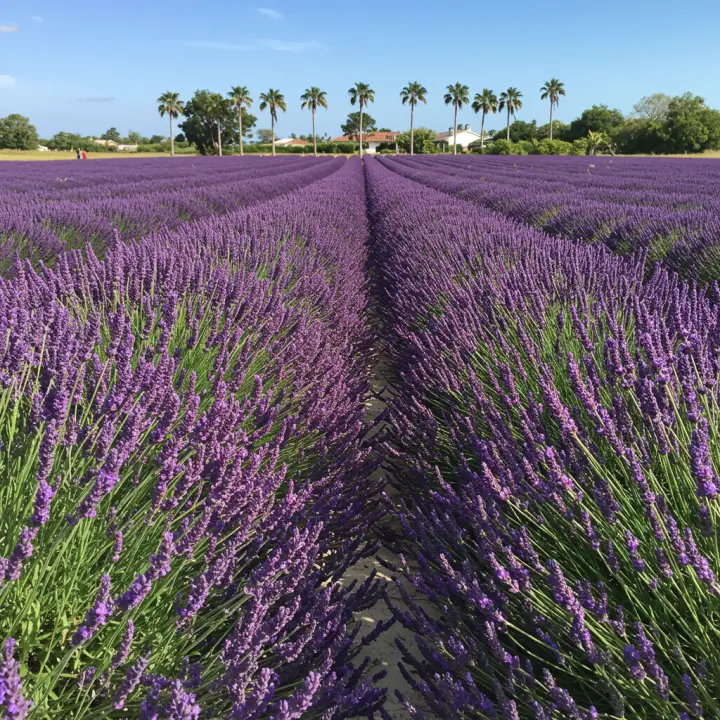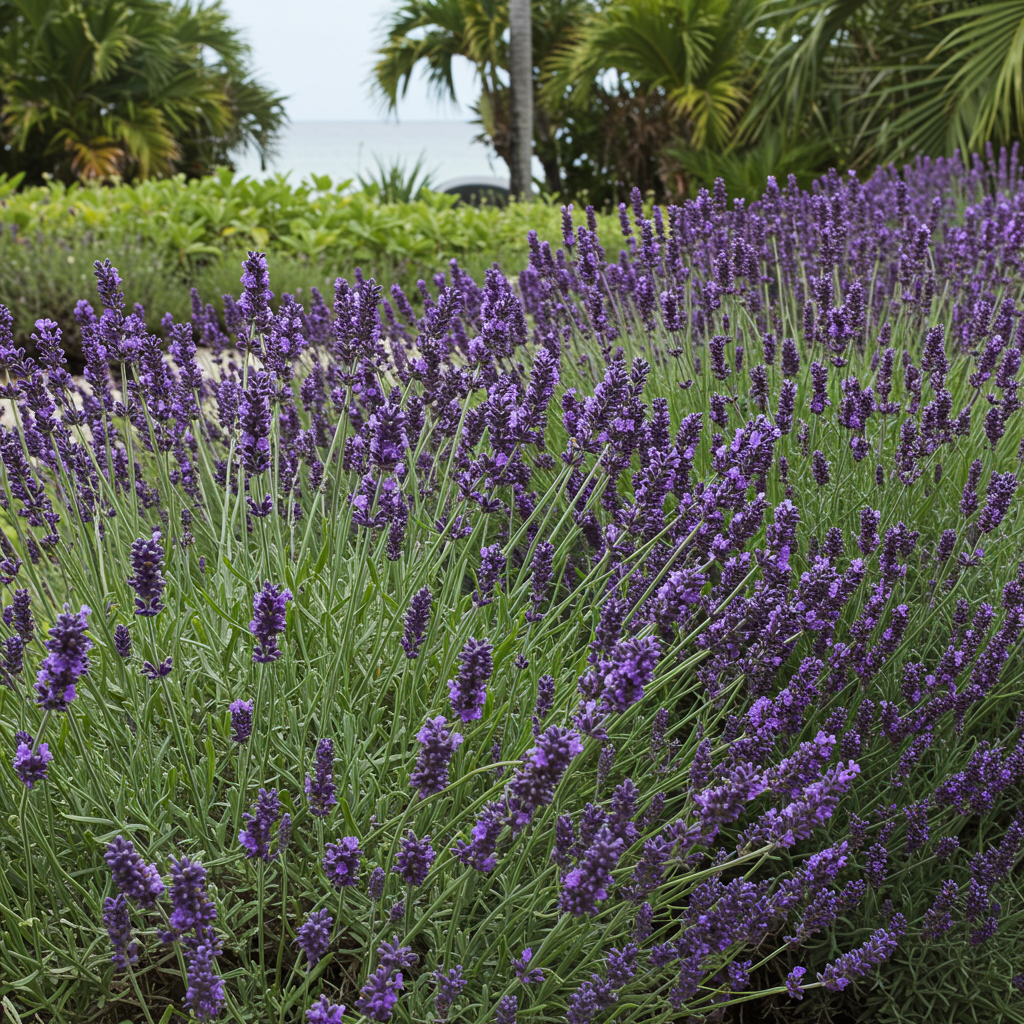Dreaming of fragrant lavender fields in your South Florida garden? It’s possible! This guide reveals the lavender for South Florida varieties that stand the best chance of thriving in our unique climate, along with essential care tips for success.

Unlocking the Secret to Growing Lavender in South Florida
South Florida’s tropical climate, with its relentless humidity, high heat, and abundant rainfall, often poses a significant challenge for growing plants typically found in Mediterranean regions – and lavender is a prime example. Many gardeners dream of its calming aroma and beautiful purple blooms, only to face disappointment. However, with the right selection of varieties and a few strategic gardening adjustments, you can absolutely enjoy lavender in your South Florida landscape. This post will delve into the specific challenges, highlight the ultimate lavender picks best suited for our climate, and provide the insider tips you need for success.
Why Growing Lavender in South Florida is Tricky
Before we dive into the solutions, it’s crucial to understand the obstacles. Lavender (Lavandula) typically prefers:
Dry Heat: Our humidity is a major foe, fostering fungal diseases.
Well-Drained, Lean Soil: South Florida often has sandy but moisture-retentive soils, or heavy, alkaline soils that don’t drain quickly enough.
Good Air Circulation: Dense plantings exacerbate humidity issues.
Cooler Winters: Our mild winters don’t provide the chill many lavenders need.
The key to success lies in choosing varieties that are more tolerant of heat, humidity, and occasional heavy rain, combined with impeccable site preparation and care.
The Ultimate Picks: Best Lavender Varieties for South Florida
While no lavender variety will truly “thrive” in South Florida like it would in Provence, some varieties are significantly more resilient and offer a realistic chance of success. Here are our top ultimate picks:
1. Spanish Lavender (Lavandula stoechas)
Often considered one of the most successful lavenders for humid climates, Spanish Lavender is a true contender for South Florida.
Why it works: It’s more tolerant of heat and humidity than English varieties. It also tends to be evergreen in our climate.
Appearance: Distinctive “rabbit ear” bracts atop the flower spikes, often purple but can be pink or white.
Care considerations: Still requires excellent drainage and full sun. Prune after flowering to encourage rebloom and maintain shape.
2. French Lavender (Lavandula dentata)
Another excellent choice, French Lavender is known for its serrated (toothed) leaves and often more open, airy growth habit.
Why it works: It’s more heat and humidity tolerant than English lavender, and its lacy leaves allow for better air circulation.
Appearance: Gray-green, finely toothed leaves and spikey, dark purple flowers.
Care considerations: Needs full sun, perfectly drained soil, and consistent pruning to prevent woodiness and promote bushy growth. Some varieties, like ‘Goodwin Creek Grey’, are particularly recommended for warmer climates.
3. Lavandula x intermedia ‘Phenomenal’
This hybrid is celebrated for its robust nature and impressive tolerance to heat and humidity across various growing zones.
Why it works: Bred for superior performance, ‘Phenomenal’ boasts strong root systems and better disease resistance, making it more forgiving in challenging climates.
Appearance: Large, fragrant purple flower spikes on sturdy stems and silvery-green foliage.
Care considerations: While more resilient, it still demands sharp drainage, full sun, and good air circulation. It can grow quite large, so give it space.
Honorable Mention: ‘Goodwin Creek Grey’ (Lavandula dentata x L. lanata hybrid)
Often grouped with French Lavenders due to its heritage, ‘Goodwin Creek Grey’ is a popular choice for warm, humid regions due to its fuzzy, silvery foliage and continuous bloom.
Why it works: Its woolly leaves and robust nature offer better resistance to humidity-induced problems.
Appearance: Beautiful silver-grey foliage and deep purple flower spikes.
Care considerations: Like its relatives, it needs excellent drainage and full sun. Pruning promotes bushiness and health.
Essential Care Tips for Thriving Lavender in South Florida
Choosing the right variety is only half the battle. How you plant and care for your lavender is equally critical for success in South Florida.
1. Perfect Your Planting Site
Sunlight: Lavender needs at least 6-8 hours of direct sunlight daily. More is better in South Florida.
Drainage is Non-Negotiable: This is the single most important factor.
Raised Beds: Plant in raised beds to ensure superior drainage, lifting the roots above soggy soil.
Soil Amendment: Amend native soil heavily with perlite, small gravel, or coarse sand to improve drainage. A mix of 50% native soil and 50% drainage material is a good starting point. Avoid peat moss, which retains too much moisture.
Air Circulation: Space plants adequately to allow for good airflow, preventing fungal issues.
2. Watering Wisely
Deep and Infrequent: Once established, lavender is drought-tolerant. Water deeply when the top few inches of soil are dry, then allow the soil to dry out completely before watering again.
Avoid Overhead Watering: Water at the base of the plant to keep foliage dry, especially in the afternoon, to reduce fungal risk.
3. Pruning for Health and Bloom
Post-Bloom Pruning: Trim back spent flower stalks and about one-third of the green foliage after each flush of blooms. This encourages new growth, more flowers, and maintains a compact shape.
Annual Haircut: In late winter or early spring, give the plant a more significant prune to remove any dead or woody stems and encourage vigorous new growth. This also improves air circulation within the plant.
4. Minimal Fertilization
Lavender prefers lean soil. Excessive fertilizer, especially nitrogen, can promote lush foliage at the expense of flowers and can make the plant more susceptible to rot in humid conditions.
* If you must fertilize, use a very light application of a balanced, slow-release granular fertilizer in early spring.
FAQs About Growing Lavender in South Florida
Q1: Can English Lavender (Lavandula angustifolia) grow in South Florida?
A1: English Lavender is generally not recommended for South Florida. It struggles immensely with the heat and humidity and typically succumbs to fungal diseases or root rot. Focus on Spanish or French varieties.
Q2: What kind of soil is best for lavender in Florida?
A2: Extremely well-draining, sandy or gravelly soil. Incorporate perlite, small rocks, or coarse sand into your native soil to ensure excellent drainage. Aim for a slightly alkaline to neutral pH (6.5-7.5).
Q3: How much sun does lavender need in South Florida?
A3: Lavender needs full sun – at least 6-8 hours of direct sunlight per day. Avoid shaded areas as this will only exacerbate humidity problems.
Q4: Why is my lavender dying in South Florida?
A4: Most common causes are overwatering, poor drainage leading to root rot, or high humidity causing fungal diseases. Ensure your plant has well-draining soil, deep but infrequent watering, and good air circulation.
Q5: Is lavender a common plant in South Florida?
A5: While not as widespread or carefree as in Mediterranean climates, with careful selection and proper care, it’s becoming more achievable for dedicated South Florida gardeners.
Conclusion
Bringing the timeless beauty and soothing fragrance of lavender to your South Florida garden is a rewarding challenge. By selecting the right varieties like Spanish Lavender, French Lavender, or ‘Phenomenal’, and committing to excellent drainage, ample sunlight, and smart watering practices, you can successfully cultivate lavender for South Florida. Embrace the journey – and prepare to enjoy the enchanting aroma and vibrant blooms that these top ultimate picks can bring to your tropical oasis!

